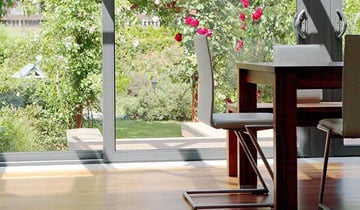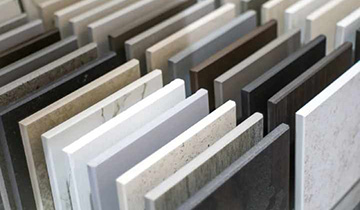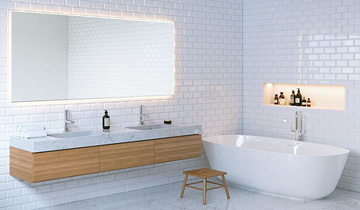9 min read
Electric underfloor heating vs wet underfloor heating – what's better?
It’s great that you are thinking about installing underfloor heating for your next project. You’ll receive all the benefits that come with underfloor...

Underfloor heating is a brilliantly versatile heating system that can be installed in any room in a home…including conservatories.
Since the early 1970s the popularity of conservatories hasn’t shown signs of slowing down. It is estimated that roughly 16% – 20% of UK households have one and at least 75% of these some form of heating of which just over half are connected to the central heating system and the rest using direct electric heaters.
One of the biggest challenges with heating a conservatory is that they are prone to a relatively high level of heat loss. Why? Because over 50% of a conservatory’s walls and 75% of the roof must be translucent or glazed which provides a larger area for heat to escape. Glass has a low thermal value and even if they are double glazed they are still much less efficient than solid walls.
However, there are some great ways to reduce heat loss which we’ll tackle later in this blog.
For the purpose of this article the focus will be on electric underfloor heating. If wet underfloor heating is more your thing, then our friends over at WMS will be able to help.
No matter if it’s electric or wet underfloor heating, both provide great benefits for heating a conservatory. Here’s a few of them:
Comfortable heat: Different to traditional central heating, underfloor heating helps to keep humidity in the air and which is then distributed evenly throughout the room. This helps to create a much more comfortable heat.
Clean design: Conservatories generally don’t have too much usable wall space, with underfloor heating you don’t need to worry about finding ‘bespoke’ radiators for conservatories, you have complete design freedom.
Zone control: According to the window industry regulator FENSA, conservatories must be ‘…heated by a system with its own and separate heating controls.’ This is exactly what underfloor heating provides.
Great efficiency: Electric underfloor heating operates at lower temperatures and is 100% efficient at point of use. Every joule of energy paid for is used at the exact point where the heat it is required.
Environmental credentials: Underfloor heating uses less energy than traditional systems and produces much less carbon emissions compared with gas alternatives.
There are two main types of underfloor heating; wet or electric.
Wet underfloor heating uses a series of pipes that are installed in the sub floor of the conservatory and warm water is fed through the pipework at around 450C.
Electric underfloor heating consists primarily of a heating cable which is installed underneath the floor level, connected to the mains electricity supply and controlled with a thermostat. The heating cable heats up which warms the surface of the floor which, in turn, warms the room. Electric underfloor heating can be bought as a loose cable system, a heating and decoupling system (perfect for tiled floors) or pre-spaced as a mat. Electric underfloor heating can run at 270C degrees for floor finishes such as wood, carpet or vinyl. For tile or stone floors, you can increase the temperature to around 290C degrees.
An electric underfloor heating system will take between 20-30 minutes to heat the room to your set temperature but only if it has been installed correctly and with insulation boards. You can buy electric underfloor heating systems in different outputs which include, 100W/m2, 150W/m2 and 200W/m2. The higher the wattage the faster the heat up time.
For conservatory heating projects we would suggest 200W/m2 because conservatories are more prone to higher heat loss.

There are a variety of choices of bases for conservatories.
Concrete base
This is probably the most popular but it can take a little longer to prepare due to the time it takes for the concrete base to set. However, concrete bases are good for underfloor heating to be installed on.
Wooden base
Lengths of thick timber are used and secured using bolts. It provides a strong foundation for more problematic areas such as ones that are sloping.
Raised base
This is the more expensive option where the walls of the conservatory take most of the weight. This method is much more complex and used for sloping landscapes.
Why does the base matter? What substrate you use will influence the build-up of your underfloor heating system. For example, for concrete substrates we would recommend using uncoated insulation boards and for timber substrates we would advise installing coated insulation boards which provide more rigidity.
Oh, before you ask ‘do I need insulation board?’, the answer is ‘yes!’ Without it, your underfloor heating will not be as efficient and it will cost you more money to run. You can read all about the importance of insulation in our blog ‘Why removing insulation board is costing homeowners’.
Have you decided what floor finish you are having?

Tile and Stone Floors
Tile or stone floors are one of the most common for conservatories and if you are planning to go this route then you have a couple of good options. You can either install a heating and decoupling system or a heating mat which is a pre-spaced heating cable secured to mesh matting.
An important thing to remember with tiled floors is that they can be susceptible to cracking and gaps forming between tiles because of changes in temperature. Because of this we would probably lean towards installing a heating and decoupling system for a conservatory project. This type of underfloor heating system is specifically designed to prevent cracking, lifting and delamination of tiled floors as well as acting like a decoupling layer which allows the tiled surface to move independently from the substrate.
Another benefit of this type of system is that it allows for different heating outputs by changing the spacing of the cable. For your conservatory project we would recommend the highest output which would be 195W/m2. Alternatively, a 200W/m2 heating mat would work well but the inclusion of a decoupling membrane might be advisable.
Check out ‘The best electric underfloor heating for tile and stone floors’ article for a comprehensive guide to electric heating for tile or stone floors.
When installing an electric underfloor heating system, you must get a Part P registered electrician to make the final connections to the mains!
Before finally deciding on the most appropriate heating system for your conservatory, a heat loss calculation would be recommended because you want to ensure that whatever you install, it will heat the room comfortably and you won’t be disappointed.
Controllability
Another important factor of improving efficiency of your underfloor heating system for your conservatory is controllability. We always recommend choosing a thermostat that suits your lifestyle. For example, if you are a fan of smart technology then a smart thermostat will be ideal for you.
We’ve previously written a detailed article about choosing the right thermostat for underfloor heating which is well worth the read before you part from any cash.
There are several factors to consider when selecting the best underfloor heating for your conservatory. You need a higher output to combat the heat loss and select a system which is best suited to your chosen floor finish.
Remember that you can reduce heat loss by introducing conservatory blinds (or similar) and insulating the roof. The best thing about installing underfloor heating in your conservatory is that it allows you to use your conservatory all year round. Now that’s worth the investment.
If you have any further questions, please contact our five-star rated customer service team who will be happy to help. Call 0800 019 5899 or just head on over to the contact us page.

9 min read
It’s great that you are thinking about installing underfloor heating for your next project. You’ll receive all the benefits that come with underfloor...

9 min read
When you ask a group of people if electric underfloor heating can be used as a primary heat source, more often than not you’ll get a mix of...

5 min read
This is one of the most commonly asked questions and for good reason! With so many brands of underfloor heating out there including Warm Up, Heat Mat...